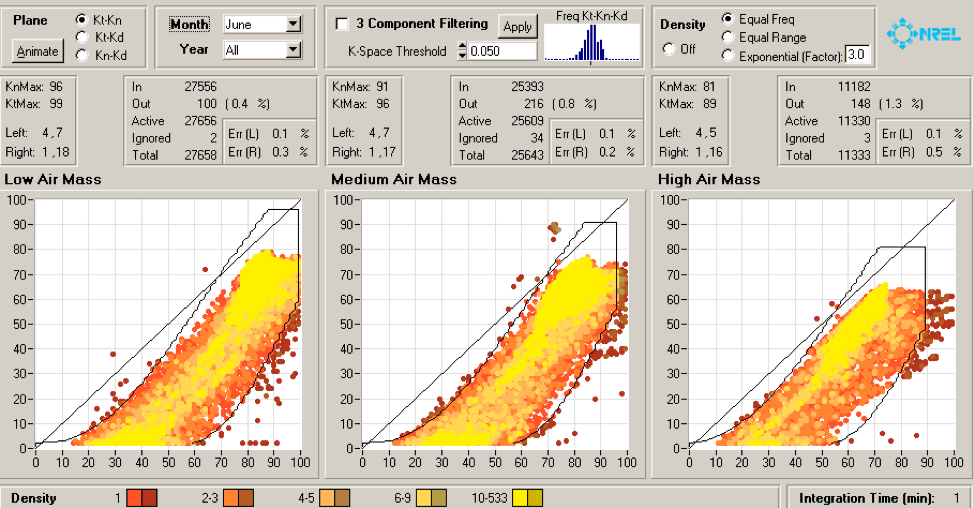6th International Conference Energy & Meteorology: Abstract Submission
Data Quality Assessment using SERI QC (794)
Introduction:
High quality solar resource data requires stringent calibration, operation and maintenance, data quality assessment and control procedures. These procedures are essential to minimize the uncertainty in predicting solar output and improving the bankability of financing solar projects [1]. Therefore, for many years the National Renewable Energy Laboratory (NREL) has been implementing strict protocols for calibration, measurement, modeling, operation and maintenance, and assessing data quality and control of solar resource datasets. In this abstract, we will present the data quality assessment method employed by NREL for both measured and modeled solar resource data using NREL’s SERI-QC software package [2].
Method:
The software uses three component data analysis for global horizontal irradiance (GHI), direct normal irradiance (DNI) and diffuse horizontal irradiance (DHI) where it implements the clearness index (K) derived by normalizing the GHI, DNI, and DHI irradiance data to extraterrestrial solar radiation at the top of the atmosphere. These normalized quantities are represented by Kt, Kn and Kd, respectively. The K-values of any one of the three components can be computed from the other two. Further the K-values are plotted in X and Y axis to create a K-space which illustrates the possible and impossible regions. For instance, as described in [2], it is theoretically impossible for data to exist above the one to one line, because this would mean Kt < Kn and Kt - Kn is not equal Kd (because Kd cannot be negative). Therefore, the software creates possible envelopes of K-space and new data are assessed against these spaces.
Results:
The SERI QC software package includes the QCFIT tool to plot data in K-space (Figure 1). The QCFIT tool requires data records collected for a significant period at a location. In this case the National Solar Radiation Database (NSRDB) is a good candidate for creating these envelopes for a location since this database contains 20 years of modeled solar resource data at a half-hourly 4km by 4km spatial resolution. However, unlike measurement station data, NSRDB is an instantaneous dataset representing a spatial extent rather than integrated values which could cause challenges in creating good envelopes, especially for the high airmass values where the change in airmass is rapid compared to low or medium airmass (Figure 2). In the presentation, we will demonstrate our attempt to fine tune the envelopes from the NSRDB to obtain accurate envelopes that represent location specific K-space data.
Figure 2: Hourly QCFIT output from NSRDB V3 (1998-2017) for NREL location
Conclusion:
Thorough data quality assessment and data collection and dissemination techniques provide confidence for various project phases. To meet this need, the NREL’s SERI QC software package assists in providing accurate solar resource dataset. Further, the NSRDB data that is available for a period of 20 years from Canada to Brazil can be used to develop the K-space envelopes for a location using the QCFIT tool thereby reducing the time required for collecting ground measurements to develop the K-space envelopes. Similarly, any high-quality satellite based datasets can serve the same purpose.


- Manajit Sengupta, Aron Habte, Christian Gueymard, Stefan Wilbert, Dave Renne, Thomas Stoffel, 2017, Best Practices Handbook for the Collection and Use of Solar Resource Data for Solar Energy Applications: Second Edition, NREL – ISBN 978-0-692-08922-4. https://www.nrel.gov/docs/fy18osti/68886.pdf
- Maxwell, E., Wilcox, S., Rymes, M., 1993, "Users Manual for SERI_QC Software: Assessing the Quality of Solar Radiation Data," NREL/TP-463-5608, NREL, Golden, CO.